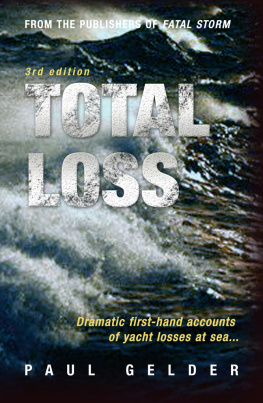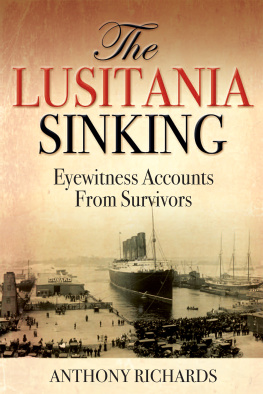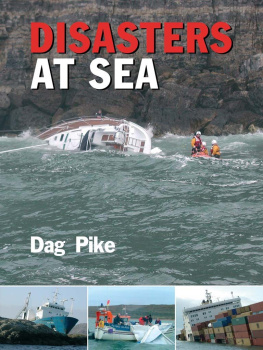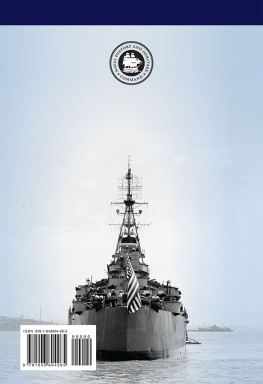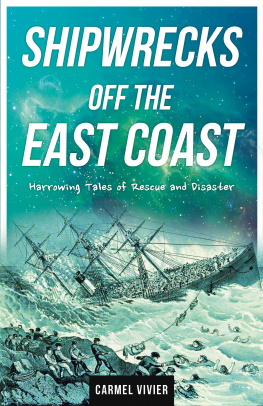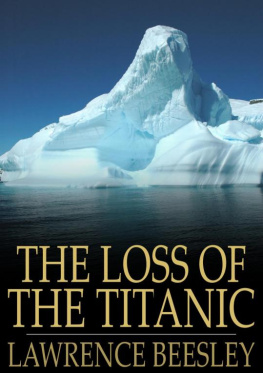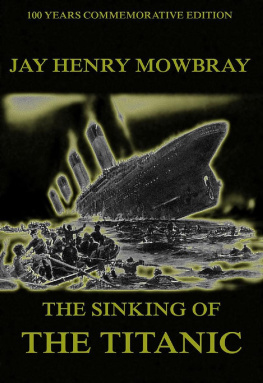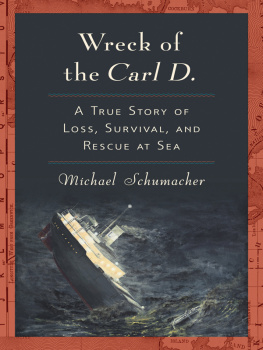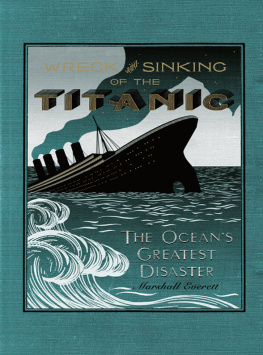REVIEWS OF THE FIRST EDITION
Besides being gripping reading, there is a wealth of information to be learned about the actions of others in emergencies: what worked and what didnt work... invaluable...
Yachting
Sure, you can learn from your own mistakes, but wouldnt you rather learn from theirs.
Sailing
Should be required reading for anyone going offshore. It will heighten your appreciation of the many things which can go wrong... Skippers who keep their mistakes to a minimum will find they have less need of good luck to stay afloat
Classic Boat
All the stories are a celebration of the human instinct for survival battling against the elements and the odds.
Yachting Monthly
40 stories of tragedy at sea... the tales provide gripping if sometimes unsettling reading and many valuable lessons.
Cruising World
The stories will make the reader a better, or a retired, sailor.
WoodenBoat
I believe the book is simply a top 10 must read for a really comprehensive anecdotal understanding of accidents and how they happen.
Good Old Boat Magazine

D EDICATED TO ALL SAILORS WHO HAVE SUFFERED THE HEARTBREAKING LOSS OF THEIR YACHT AFTER A LIFE AND DEATH STRUGGLE . A ND LET US NOT FORGET THE COURAGE AND RESOURCEFULNESS OF THEIR RESCUERS . T HIS BOOK IS A REQUIEM FOR ALL THEIR BRAVE SPIRITS .
Published by Adlard Coles Nautical
an imprint of Bloomsbury Publishing Plc
50 Bedford Square, London WC1B 3DP
www.adlardcoles.com
This electronic edition published in 2013 by Bloomsbury Publishing Plc
Copyright Paul Gelder 2013
First edition published 2002
ISBN 978-0-7136-8783-5
ePub: 978-1-4081-4693-4
ePDF: 978-1-4081-7043-4
All rights reserved
You may not copy, distribute, transmit, reproduce or otherwise make available this publication (or any part of it) in any form, or by any means (including without limitation electronic, digital, optical, mechanical, photocopying, printing, recording or otherwise), without the prior written permission of the publisher. Any person who does any unauthorised act in relation to this publication may be liable to criminal prosecution and civil claims for damages.
The right of the author to be identified as the author of this work has been asserted by him in accordance with the Copyright, Designs and Patents Act, 1988.
A CIP catalogue record for this book is available from the British Library.
Note: while all reasonable care has been taken in the publication of this book, the publisher takes no responsibility for the use of the methods or products described in the book.
Visit www.bloomsbury.com to find out more about our authors and their books. You will find extracts, author interviews, author events and you can sign up for newsletters to be the first to hear about our latest releases and special offers.
TWO DAYS SPENT ON A SOUTH PACIFIC coral reef in 2006 in the remote Tuamotus, a chain of atolls known as the dangerous archipelago in French Polynesia, gave me a unique insight into emotional drama of shipwreck and the practical considerations of rescue. As a journalist, I was an eyewitness to the work of the salvage team that ultimately saved the famous 53ft wooden ketch Gipsy Moth IV. She had been swept on to a reef 200 miles or so north-east of Tahiti after a navigational blunder.
In just 48 hours, thanks to the skills of the team and some extraordinary luck, the scenario went from tragedy to triumph. The crippled ketch had her holes patched and, on a homemade wooden sledge nailed to her starboard side, was towed off the reef by an ocean-going tug. Francis Chichesters iconic yacht, which he sailed into the history books in 1967, was suddenly brought back from the brink of being declared a total loss. It was an unforgettable and emotional moment for all involved.
All the stories in this book are a celebration of the human instinct for survival battling against the elements and the odds even if in all these cases the yachts were a total loss.
This is not a pessimistic book, as Jack Coote acknowledged in the preface of the original edition 23 years ago. Its not intended to discourage anyone from setting sail in a well-found boat having made sound preparations. Neither are the stories morbid or voyeuristic. In fact, the only loss of life among the 40 incidents in this book is aboard two yachts: the 25ft yacht Ouzo, run down or swamped by a P&O ferry in the English Channel in 2006, and Hooligan V, which lost her keel.
We may never know what really happened in the case of Ouzo, but the loss of Rupert Saunders, James Meaby and Jason Downer, all in their mid-thirties, was a tragedy which threw a spotlight on a host of valuable lessons which may help save lives in the future. The death of Jamie Butcher, 27, on Hooligan V, also led to a comprehensive investigation by the Marine Investigation Branch into the reasons for metal fatigue and how such accidents can be avoided in the future.
Why make mistakes when you can learn from the hard-won lessons and experience of those who sailed before you?
The surviving sailor who loses a yacht, for whatever reason, has lost a partner in great adventures. As Frank Mulville wrote in Girl Stellas Going: A boat... has a soul, a personality, eccentricities of behaviour that are endearing. It becomes part of a person, colouring his whole life with a romance that is unknown to those who do not understand a way of life connected with boats. The older a boat becomes, the stronger the power... people look at boats with wonder and say Shes been to the South Seas, or Shes just back from the North Cape, and the boat takes on a reputation in excess of that of its owner...
A boat is always there you never stop worrying about her whether you are aboard or ashore... Men lie awake worrying about their bank balances, their waistlines, their wives, their mistresses actual or potential; but sailors worry about boats.
For Mulville the loss of Girl Stella was a dead weight of responsibility that settled heavily on his shoulders... a score that could never be wiped clean.
For Michael Richey there could also be no going back after the loss of Jester. As he watched her recede into the distance, looking as trim and pretty as ever he realised how much he had loved her. Men personalise their boats as no other artefact. I felt I had failed her, that I should have stayed with the boat... It was one of the unhappiest moments of my life, he recalled.
The chances of having to abandon ship are as small as being involved in a plane or train crash. A reasonably competent yachtsman can expect to sail for a lifetime without having to face the kind of dramas described in the following pages. Nevertheless, it can happen, and perhaps thats why the awful finality of the term total loss holds such a fascination for most sailors. Yachts are lost at sea for many reasons. Some are strange and unexplained. But I am grateful that the survivors of such losses have been willing to share their experiences through their genuine desire to pass on lessons which can benefit us all.
PAUL GELDER
THIS BOOK COULD NOT HAVE BEEN compiled without the co-operation of many people. The original idea came from Julian van Hasselt, when he worked for Kelvin Hughes. The late Peter Tangvald had once intended to put together a similar book and generously shared some of his research with Julian, who did some preliminary work before handing the project to Jack Coote, who edited the original edition in 1985. In 1999 I took over the second edition following Jacks death in 1993.

